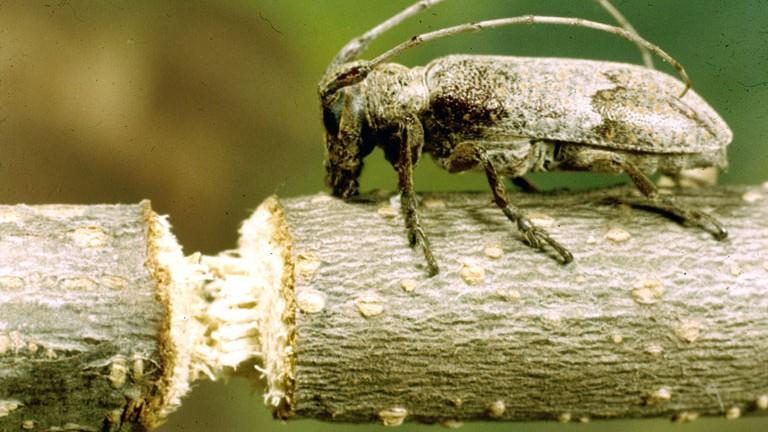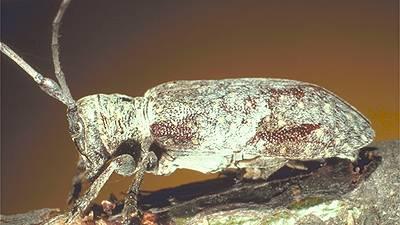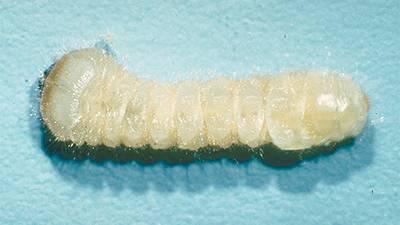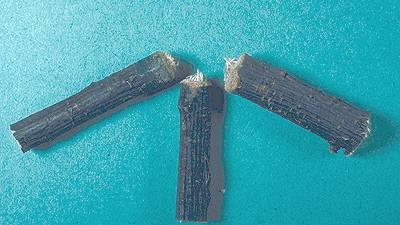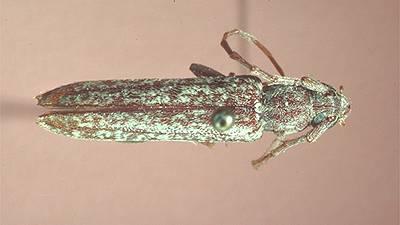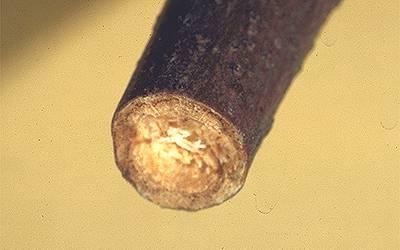Key points
- The twig girdler is a native longhorned beetle that attacks hickory, honeylocust, persimmon, elm, oak, hackberry, poplar, dogwood, linden, and flowering fruits.
- Twig pruners are also native longhorned beetles. They attack oak, hickory, ash, maple, honeylocust, elm, linden, sweetgum, hackberry, and persimmon.
Twig girdler
- The adult beetles are about 3⁄4 inch long, cylindrical, and gray with two dark bands across the wing covers. The antennae are longer than the body.
- The larvae are called roundheaded borers. They are 1 inch long and white with black heads.
- Female twig girdlers are attracted to individual shade trees.
- They lay eggs in 1⁄4 to 1⁄2 inch diameter twigs.
- They then chew (girdle) the twigs, which then drop to the ground (late summer-early fall).
- The larvae overwinter in the twigs on the ground and complete their development the following summer.
Management
- To monitor for this insect, look for accumulations of twigs under shade trees in August and September.
- The cut ends look as though they have been cut by a beaver.
- To control twig girdlers, rake up and destroy twigs in the fall, or the following season before the adults emerge beginning in August.
- There is no insecticidal control.
